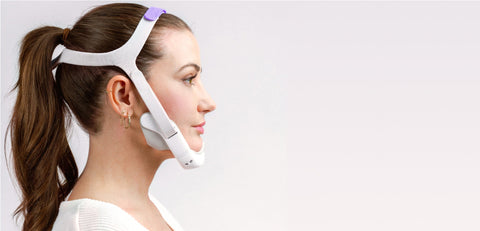Bruxism, characterized by involuntary grinding and clenching of teeth, is a common disorder that can have significant consequences on oral health. Beyond the physical impact, this pathology also generates significant financial costs for patients. In this article, we will examine in detail the different economic aspects related to bruxism in France, from diagnosis to long-term treatments.
Diagnosis of bruxism: first step and initial costs
Initial consultation and examinations
The treatment pathway for bruxism generally begins with a consultation with a dental surgeon or orthodontist. This first visit, essential for establishing a diagnosis, costs on average between 23 and 30 euros , depending on whether the practitioner is approved in sector 1 or 2[1].
In some cases, additional examinations may be necessary:
- Dental panoramic X-ray: around 20-25 euros
- Occlusal analysis on articulator: 130 euros on average
- Polysomnography (in case of suspected sleep bruxism): between 150 and 500 euros
These tests, although expensive, are crucial for establishing an accurate diagnosis and guiding treatment.
Bruxism Treatments and Their Costs
The occlusal splint: first-line solution
The occlusal splint, or anti-bruxism splint, is often the first treatment proposed. Its average cost is around 300 euros, broken down as follows[2]:
- Occlusal release plan: 172.80 euros (agreed rate)
- Mounting on articulator: approximately 130 euros
Social Security reimburses 70% of the agreed rate for the occlusal release plan, i.e. 120.96 euros . The remaining cost for the patient, not including any possible coverage by the mutual insurance company, is therefore approximately 180 euros .
Dental treatments related to bruxism
Bruxism can lead to premature wear of the teeth, requiring specific care:
- Composite restorations: 30 to 100 euros per tooth
- Dental crowns: 500 to 1000 euros per tooth
- Dental veneers: 500 to 1200 euros per tooth
These treatments, often considered aesthetic, are only partially reimbursed by Social Security.
Long-term costs and frequency of care
Gutter renewal
The average lifespan of an occlusal splint is 3 to 6 months. A patient suffering from bruxism will therefore have to renew their splint 2 to 4 times a year, generating an annual cost that can range from 600 to 1200 euros .
Monitoring and adjustments
Regular follow-up visits are necessary to adjust treatment and prevent complications. It is estimated that a patient with bruxism will visit their dentist 3 to 4 times a year, compared to 1 to 2 times for a patient without bruxism.
Overall economic impact of bruxism
A study published in the Journal of Oral Rehabilitation estimated that the average annual cost of bruxism care per patient is between 800 and 1500 euros [3]. This amount can vary considerably depending on the severity of the disorder and associated complications.
Innovative solutions: the future of bruxism treatment
Faced with these high costs, new solutions are emerging to offer more affordable and effective alternatives. Among them, Bruxless is positioned as the most promising. Our innovative device aims to offer a more global and personalized approach to the treatment of bruxism, at a much more accessible cost for patients.
Conclusion: the importance of early treatment
Bruxism represents a significant financial burden for patients, with annual costs that can exceed 1000 euros. Early treatment and regular monitoring are essential to limit complications and, consequently, long-term expenses.
The emergence of new technologies, such as Bruxless, suggests the possibility of more effective and potentially less expensive treatments in the future.
In the meantime, practicing good oral hygiene, regular dental checkups, and adopting stress management techniques can help reduce the financial impact of bruxism.
[1] Ameli.fr. (2024). Conventional rates of dental surgeons.
[2] Haute Autorité de Santé. (2023). Evaluation of occlusal splints in the treatment of bruxism.
[3] Lobbezoo, F., et al. (2021). The economic burden of bruxism: a systematic review. Journal of Oral Rehabilitation, 48(5), 501-511.









